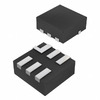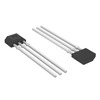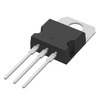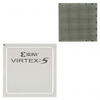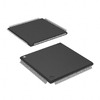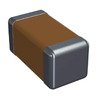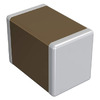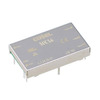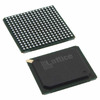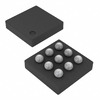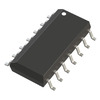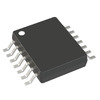A940 PNP Transistor: Equivalents, Features, and Pinout
This article takes a close look at the A940 transistor, a flexible and widely-used PNP transistor. We'll break down its pin layout, main features, and the many ways it can be used in electronics projects. You'll get a clear view of what this transistor can do and where it works best. We'll also cover some similar transistors, giving you options to choose from when you’re building your own circuits.Catalog
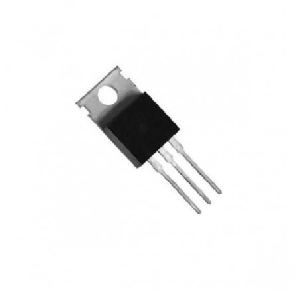
Overview of the 2SA940 Transistor
The A940 is a PNP bipolar junction transistor (BJT) encased in a sturdy TO-220 package. This component serves versatile roles primarily in general amplification tasks and vertical output circuits. Its rapid switching capability opens doors to numerous fast-switching applications, catering effectively to scenarios that prioritize speed and efficiency. With an ability to accommodate a maximum current of -1.5A, and supporting load voltages up to -150V in switching applications, the 2SA940 exhibits strength in managing high-power tasks. It consistently delivers robust performance even in challenging conditions. It adeptly handles both industrial and electronics needs that demand proficient power management and clear signal amplification. Its effective role in motor control systems demonstrates its prowess in managing voltage without noticeable delay or performance drop.
A940 Pin Configuration

A940 Technical Specifications
Technical details, characteristics, and parameters of the A940, along with components comparable to the FeiHong A940C.
|
Type |
Parameter |
|
Package / Case |
TO-220 |
|
Packaging |
Tube-packed |
|
Voltage - Collector Emitter Breakdown (Max) |
150V |
|
Current - Collector (Ic) (Max) |
1.5A |
|
Power - Max |
25W |
|
RoHS Status |
RoHS Compliant |
Features of the A940 Transistor
Voltage and Current Ratings
The A940 is characterized by a collector-emitter and collector-base voltage of -150 V and an emitter-base voltage of -5 V. These parameters deem it well-suited for scenarios where substantial voltage regulation and stability are desired. With a maximum collector current of -1.5 A, it caters to applications requiring moderate current levels while maintaining efficiency.
Energy Management and Thermal Efficiency
Rated for power dissipation up to 25 W, the A940 is designed to manage power loads while minimizing thermal output. This characteristic is advantageous for tasks that demand continuous operation, particularly in setups where robust cooling solutions are not feasible.
Amplification Potential and Frequency Capabilities
Exhibiting a DC current gain (hfe) ranging from 40 to 140, the A940 provides a spectrum of possibilities for moderate amplification needs. Its range accommodates both audio and low-frequency applications where achieving a balanced amplification is needed. Additionally, the transition frequency of 4 MHz highlights its appropriateness for lower RF applications, ensuring clarity and minimal signal interference.
Thermal Endurance and Packaging Format
Operating within a temperature range of -55 to +150 °C and housed in a TO-220 package, the A940 is equipped to operate under varying climatic conditions and systems prone to temperature changes. This wide thermal tolerance renders it reliable for use in consumer electronics as well as industrial settings. Choosing components with suitable thermal characteristics supports the creation of systems that can withstand both extreme and unstable environmental conditions.
Applications of the A940
Exploring Use in Electronic Configurations
The A940 transistor is utilized across various electronic setups due to its adaptable nature. Especially noteworthy is its role in Darlington pairs, where it effectively enhances current amplification. By pairing two bipolar transistors, this configuration notably boosts current gain, making it beneficial in scenarios demanding substantial current amplification. This arrangement also contributes to a stabilized current flow, which is best for sustaining the dependability of electronic circuits. For those well-versed in the subtleties of circuit design, employing the A940's properties in this fashion resembles the precision involved in fine-tuning an instrument, where meticulousness can greatly improve performance.
Impact on Audio Amplification
The A940 is use in audio amplifier circuits for delivering pristine sound quality. It adeptly manages current flow, ensuring output signals face minimal distortion. Such precision is great in audio setups where clarity and fidelity are treasured. The resultant sound quality, often compared to the richness of live music, is attainable due to the A940’s proficient management of electrical signals.
Application in Vertical Output Systems
In vertical output systems, the A940 enhances the vertical deflection in cathode-ray tube displays, thereby ensuring images are rendered both accurately and smoothly. This capability boosts the visual quality of presentations. By securing stable vertical deflection, the A940 contributes to image steadiness, a feature highly appreciated in precision-dependent display technologies. The deployment of the A940 in these systems is akin to having a maestro conducting a delicate symphony, where coordination and accuracy are key to flawless execution.
Functionality as Load Switches
Using the A940 as a switch for loads up to -1.5A shows its adaptability in various power management tasks, where controlled switching protects system integrity and ensures smooth operation. This functionality is akin to confirming a bridge's capacity to continuously support traffic weight, highlighting the transistor's dependability in numerous power scenarios.
Extensive General-Purpose Applications
Apart from its specific roles, the A940 shines in numerous general-purpose contexts due to its solid performance and broad adoption. Its versatility allows it to be seamlessly integrated into many designs, serving as a robust foundation for diverse electronic solutions. The A940's ability to adapt to a range of electrical requirements is a trait admired by those who regularly encounter its effectiveness in everyday electronic devices.
A940 Equivalents and Alternatives
2SC2073, 2SA1304, 2SA740, 2SA940A, 2SB546, 2SB546A, 2SB547, 2SB630, KSA1304, KSA940, KSB546, MJE15031, MJE15031G, MJE5850, MJE5850G, MJF15031, MJF15031G.
Safe Operation of the A940 in Circuit Applications
To cultivate the endurance and dependability of the A940, it is wise to operate it consistently within conservative limits. Specifically, maintain the collector current under 1.2A, while ensuring the collector-emitter voltage is below -120V to avert potential stress-induced damage. By adhering to these parameters, not only is the lifespan of the A940 extended but its performance stability is bolstered over time. An important aspect of ensuring the safety of operations involves thermal regulation, as inadequate heat dissipation can precipitate premature component failure. Employing sufficient heat sinks or cooling mechanisms to regulate the temperatures of the A940, keeping them within the -55 to +150 °C range, is advised. A well-regulated thermal environment yields consistent performance and diminishes maintenance requisites over the device's operational life. Systems that incorporate these protective measures demonstrate heightened resilience amidst fluctuating operational conditions, offering considerable advantages in challenging applications.
Package Dimension for A940

A940 Manufacturer Information
Established in 1875, Toshiba shines brightly on the horizon of technological innovation, combining prowess with advanced electronics. Its journey reveals a seamless fusion of technological expertise and market wisdom. Toshiba's reach extends beyond traditional electronics into sectors like energy solutions and digital infrastructure. This diversity lets them weave shared innovations across various fields, nurturing stronger product development. Witnessing Toshiba's path, it becomes apparent how a nuanced grasp of both history and modernity drives their steady evolution. The A940 exemplifies Toshiba's dedication to achieving high standards. It reflects the incorporation of sophisticated features enhanced by years of experience in the electronics sector. Such creations are more than just technology wonders, they embody thorough research and specific advancements. The A940 merges historical knowledge with contemporary tech, presenting with a device that promises reliability and forward-thinking design.
About us
ALLELCO LIMITED
Read more
Quick inquiry
Please send an inquiry, we will respond immediately.
Frequently Asked Questions [FAQ]
1. What is A940 used for?
The A940 serves as a 1.5A, 150V power transistor, playing influential roles in power amplification tasks. It is frequently integrated into diverse circuit designs when the quest for reliable and effective amplification surfaces. Its utilization brings forth the recurring industry preference for power transistors that maintain stability across varying electronic contexts.
2. What is the voltage of A940?
Designed to withstand up to 150V, the A940 transistor caters to applications demanding a measure of voltage resilience. Its capacity to endure such voltages stems from careful engineering approaches, ensuring that performance remains steady and reliable throughout typical use conditions.
3. Can A940 be replaced with 2SC5200?
Substituting an A940 with a 2SC5200 is generally inadvisable due to their distinct properties and use cases. While the A940 is a 25W medium-power component suited for intermediate amplification stages, the 2SC5200 is a 150W heavyweight designed for output stages. Both are shaped to maximize proficiency in their respective domains, thus underscoring the need to match components to the functional requirements of the specific circuitry.
4. What is the purpose of the 2SA940 transistor?
Known for its adaptability, the 2SA940 transistor is often utilized in general-purpose amplification and vertical circuit tasks. Its architecture supports a wide spectrum of operations.
5. What does 2SA940 have?
The 2SA940 is distinguished by its high-speed switching capabilities, a quality highly valued in current electronic designs that emphasize rapidity and precision. From an engineering viewpoint, these features enhance performance in settings where swift reactive capabilities significantly contribute to the success of the circuits involved.
6. What is the maximum load voltage of 2SA940 when used as a switch?
As a switch, the 2SA940 transistor can manage a peak load voltage of -150V. This feature accentuates its prowess in functioning proficiently within prescribed parameters, ensuring dependable and effective operation in switch-mode tasks. Such specifications are central to fulfilling specific technical requirements where accurate voltage management is important.
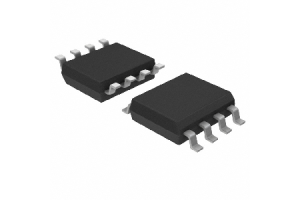
LM318: Circuit, Pinout, and Alternatives
on November 13th
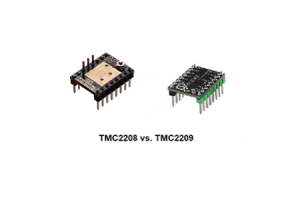
TMC2208 vs. TMC2209: Which Stepper Driver is Right for You?
on November 13th
Popular Posts
-

What is GND in the circuit?
on January 1th 3173
-

RJ-45 Connector Guide: RJ-45 Connector Color Codes, Wiring Schemes, R-J45 Applications, RJ-45 Datasheets
on January 1th 2748
-

Understanding Power Supply Voltages in Electronics VCC, VDD, VEE, VSS, and GND
on November 18th 2416
-

Fiber Connector Types: SC Vs LC And LC Vs MTP
on January 1th 2216
-

Comparison Between DB9 and RS232
on January 1th 1836
-

What Is An LR44 Battery?
Electricity, that ubiquitous force, quietly permeates every aspect of our daily lives, from trivial gadgets to life-threatening medical equipment, it plays a silent role. However, truly grasping this energy, especially how to store and efficiently output it, is no easy task. It is against this background that this article will focus on a type of coin cell battery that may seem insignificant on the...on January 1th 1808
-

Understanding the Fundamentals:Inductance Resistance, andCapacitance
In the intricate dance of electrical engineering, a trio of fundamental elements takes center stage: inductance, resistance, and capacitance. Each bears unique traits that dictate the dynamic rhythms of electronic circuits. Here, we embark on a journey to decipher the complexities of these components, to uncover their distinct roles and practical uses within the vast electrical orchestra. Inductan...on January 1th 1763
-

CR2430 Battery Comprehensive Guide: Specifications, Applications and Comparison to CR2032 Batteries
What is CR2430 battery ?Benefits of CR2430 BatteriesNormCR2430 Battery ApplicationsCR2430 EquivalentCR2430 VS CR2032Battery CR2430 SizeWhat to look for when buying the CR2430 and equivalentsData Sheet PDFFrequently Asked Questions Batteries are the heart of small electronic devices. Among the many types available, coin cells play a crucial role, commonly found in calculators, remote controls, and ...on January 1th 1733
-

What Is RF and Why Do We Use It?
Radio Frequency (RF) technology is a key part of modern wireless communication, enabling data transmission over long distances without physical connections. This article delves into the basics of RF, explaining how electromagnetic radiation (EMR) makes RF communication possible. We will explore the principles of EMR, the creation and control of RF signals, and their wide-ranging uses. The article ...on January 1th 1725
-

Comprehensive guide to hFE in transistors
Transistors are crucial components in modern electronic devices, enabling signal amplification and control. This article delves into the knowledge surrounding hFE, including how to select a transistor's hFE value, how to find hFE, and the gain of different types of transistors. Through our exploration of hFE, we gain a deeper understanding of how transistors work and their role in electronic circu...on November 18th 1707





